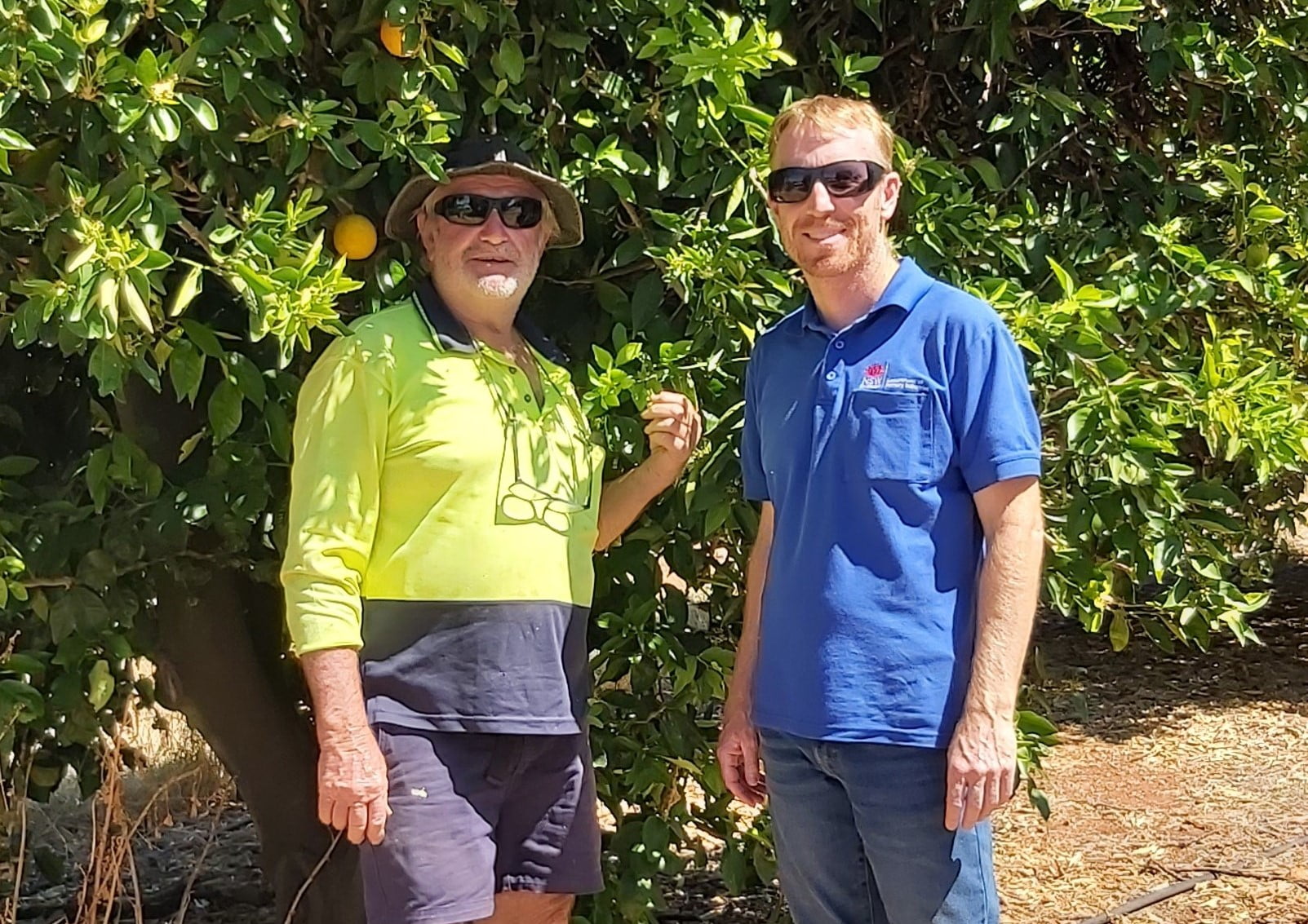28 May 2024
Building up natural enemy populations for controlling CGW
Citrus Gall Wasp (CGW) is a pest of major concern in the southern citrus growing regions of the Riverina, Sunraysia, and Riverland.
With the exception of the adult stage, CGW lives inside woody galls and is thus shielded from predators during development.
Parasitic wasps are the only known natural enemies of CGW. They are similar-sized to CGW but are honey-coloured, in contrast to the black-coloured CGW (Figure 1).
Parasitic wasps develop inside CGW larvae and eventually kill them.
In Queensland, up to 90 per cent of CGW larvae can be parasitised.
Parasitic wasps have also established in the southern regions, however, parasitism is less than 2 per cent in most orchards, which is insufficient to reduce CGW infestations. Frequent use of insecticides has likely contributed to the suppression of parasitic wasp populations.
In an effort to establish a local repository of parasitic wasps, New South Wales Department of Primary Industries (NSW DPI) has been releasing parasitic wasps annually in a citrus orchard in the Riverina. This work started in November 2019.
A single row in a block of Valencia oranges with a moderately high level of CGW infestation was used for building up the parasitic wasp population. This row was left untreated from insecticides.
Each year from 2019 to 2023, CGW galls were sourced from citrus orchards known to have high parasitism levels. These galls were taken from farms in the Riverina, Queensland and South Australia just before the adult wasps had emerged.
The galls were stored in 1.7 litre containers whilst the adult wasps emerged from the galls. In that time most adult gall wasps had died, and the surviving adult wasps were predominantly the honey-coloured parasitic wasps (Figure 2).
The parasitic wasps were taken to the Valencia block used to build up predatory wasp numbers and released there. To allow more parasitic wasps to emerge, the galls were transferred to mesh bags and hung inside the canopy of the trees. The total number of parasitic wasps released each year is estimated to vary from 500 to over 1000.
In the first two years after the first release (2020 and 2021), the parasitism rate stayed below 1 per cent.
In the fourth year (2023), the parasitism rate suddenly jumped to 19 per cent. A more intense release of parasitic wasps in November 2022 is likely to have contributed to this rapid increase in the parasitism level.
Dissection of one of the galls in mid-November 2023 showed that an estimated 50 per cent of the un-emerged wasps were the parasitic wasps (Figure 3). This is encouraging. It highlights the potential to build-up local populations of the parasitic wasps and biological control of the CGW in the future.
NSW DPI, in partnership with citrus grower Ray Durkin, plan to continue these parasitic wasp releases in future seasons. The release area will be expanded by leaving adjacent rows to the current release row untreated from insecticides. Parasitic wasps will be released in these rows. This will further build up the parasitic wasp population within the orchard.

Citrus grower Ray Durkin (left) and Scott Munro from NSW DPI at the parasitic wasp release site in 2023
This article was written by Jianhua Mo, a research entomologist with NSW DPI. It originally appeared in Issue #1 2024 of Australian Citrus News.
NSW DPI wishes to thank citrus grower Ray Durkin for providing the release site and James Altman (Biological Services) and Mal Wallis (Citri Care) for collecting and supplying the CGW galls.
This work was supported by the following Hort Innovation-funded projects: Citrus Industry IPDM Extension Program (CT10021) and Integrated Pest management of Citrus Gall Wasp and Fuller’s Rose Weevil (CT19009). These projects are funded through the Citrus Levy, with contributions from the Australian Government. NSW DPI provided in-kind support.
Membership
You are not logged in
If you are not already a member, please show your support and join Citrus Australia today. Collectively we can make big things happen.
